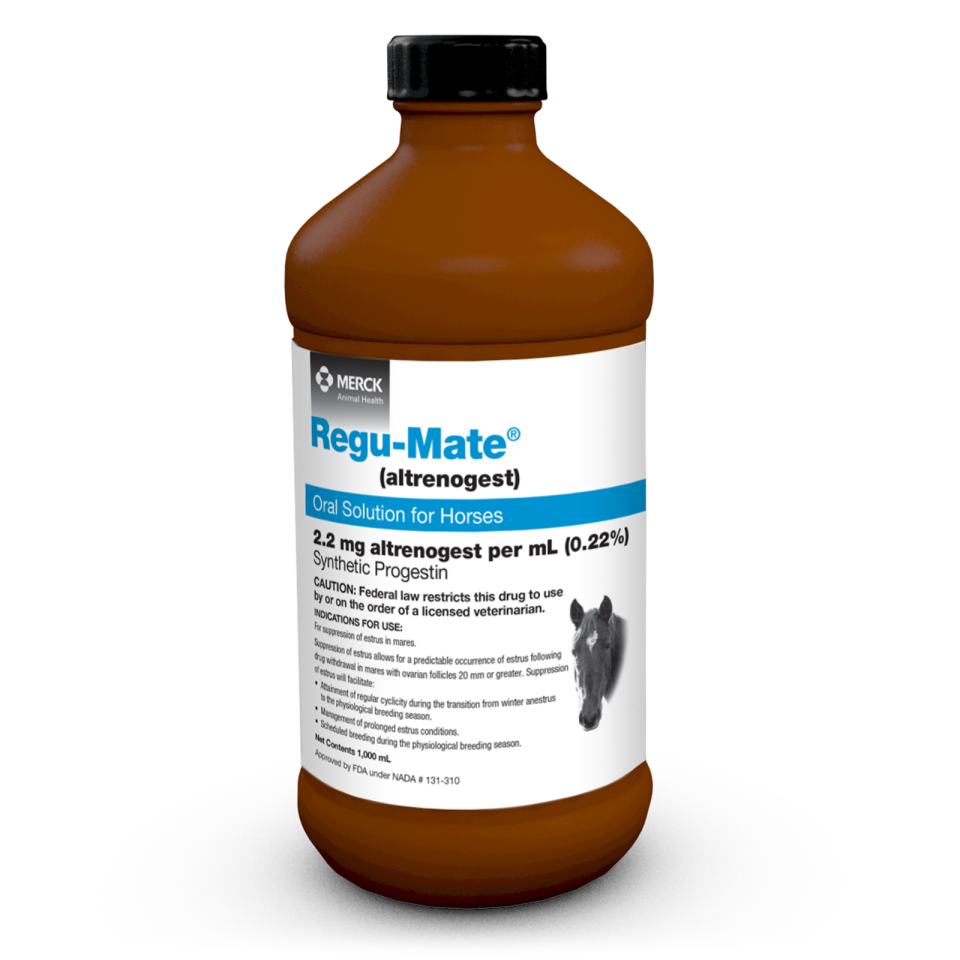
Estrus
Disease Overview
Left to her own devices, a mare’s reproductive cycle will usually follow the rhythms of nature, with estrus (fertility and sexual receptivity) occurring during spring and summer when the daylight hours are long and anestrus (sexual inactivity) corresponding with the dark winter months. Horse owners and handlers may want to manipulate natural estrus for a number of reasons.
For example, sexual behavior or estrus-related “moodiness” may be undesirable in performance horses or a breeding facility may want breeding’s to follow a predictable schedule for management reasons. Suppression of estrus can help achieve these goals safely and predictably.
Merck Animal Health Solutions
References
“Better Mare Management: How to Manage Broodmares and Performance Mares More Efficiently,” Merck Animal Health, copyright 2017, www.merck-animal-health-usa.com/offload-downloads/better-mare-management-how-to-manage-broodmares-and-performance-mares-more-efficiently.
Juan E. Romano, “Hormonal Control of Estrus in Horses,” Merck Veterinary Manual, April 2021, www.merckvetmanual.com/management-and-nutrition/hormonal-control-of-estrus/hormonal-control-of-estrus-in-horses.
Les Sellnow, “Regulating Estrus,” American Association of Equine Practitioners, 2016, aaep.org/horsehealth/regulating-estrus.
Important Safety Information
Talk to your veterinarian about proper use and safe handling of REGU-MATE® (altrenogest) Solution 0.22%. Avoid skin contact. Always wear protective gloves when administering REGU-MATE® (altrenogest) Solution 0.22%. REGU-MATE® (altrenogest) Solution 0.22% is contraindicated for use in mares having a previous or current history of uterine inflammation. When treatment is discontinued, mares exhibiting regular estrous cycles return to estrus within 4 to 5 days following treatment and continue to cycle normally. Pregnant women or women who suspect they are pregnant should not handle REGU-MATE® (altrenogest) Solution 0.22%.

